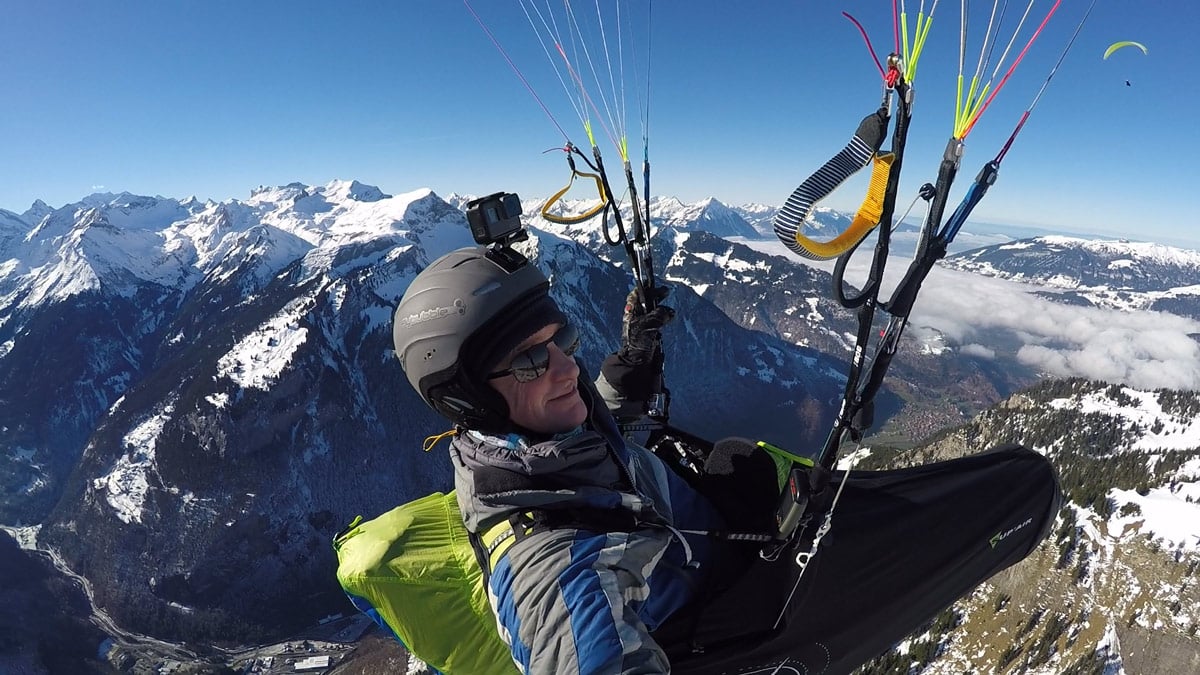
A wing like the Advance IOTA 2 is a complex construction with many features specifically designed to increase performance. If you want so much performance, and you want to keep the wing performing at its best, you need to take more care with it. I interviewed the Advance development team for some insight on getting the most out of the IOTA 2.
Leading edge profile reinforcing
The fabric is pulled taut across curved plastic wires. It’s easy to damage this part of the wing if you drag the nose across a tarred or concrete surface.
Valéry Chapuis explained, “With every aspect there are different alternatives, and we choose the one we think is best to meet the objectives of each design. With the IOTA 2, performance is important, and having the plastic wire at the surface of the profile produces the best performance because it keeps the profile very precise.”
So take care when moving your wing!
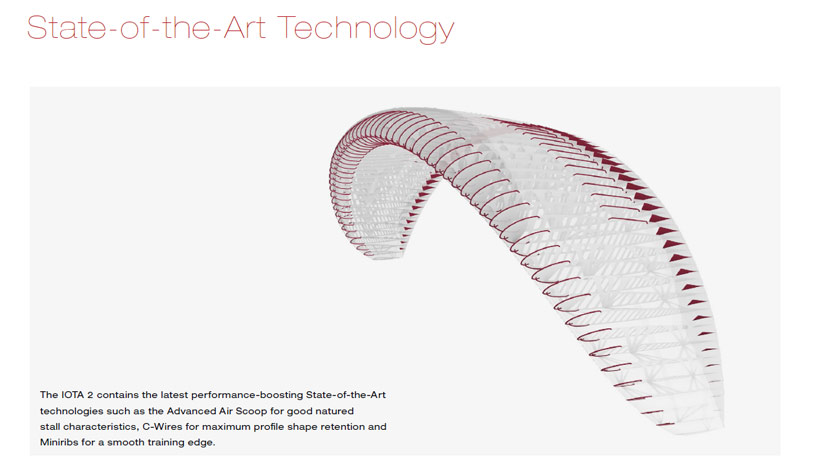
Internal bracing system
Under the normal stresses of flying, the hollow ribs and sliced diagonal bracing support the loads easily, preventing the wing from distorting and providing added strength. But if you are kiting the wing and you drop the IOTA 2 on its nose, you can damage the wing internally, even on snow, sand or grass. This is nothing new, even wings from 20 years ago had this weakness: they are not designed to have massive internal pressure, so a sudden impact on the leading edge must be avoided.
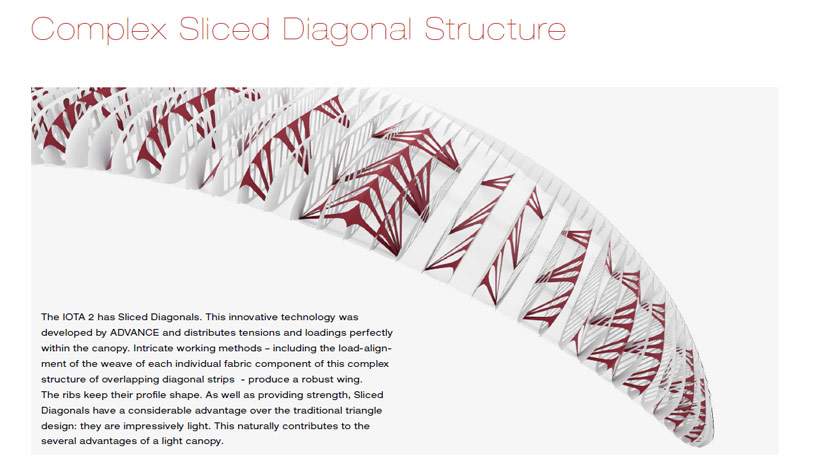
Unsheathed lines
Advance uses a special double-coated Aramid line, reputed to have a long life. Other manufacturers recommend regular line checks at 100 hours, or even trim checks at 20 hours. What about retrimming the Iota2?
Kari Eisenhut laughs. “We just had our first Bibeta 6s in for service checks, after 600 flights (they use the same lines as the Iota 2). The line strength was fine, and there was no trim adjustment necessary. These lines are very stable and strong, it’s why we use them. For sure if your wing is constructed using other types of lines, especially Dyneema, you’ll need to have them retrimmed.”
Nothing is required apart from regular servicing (every 24 months at an approved service centre).

Winglets
Since the early days of Advance, their wings have sported little winglets on the upper surface. Do they actually benefit the wing, or are they just a trademark? Christian Proschek replied. “This was actually my university thesis for my aerodynamics degree. I studied the complex airflow around them, at various sizes and angles. In their present form, they pay their own ticket – the reduction in vortex drag they create more than counteracts any parasitic drag. And they look cool!”
Find out more in the Advance tech report
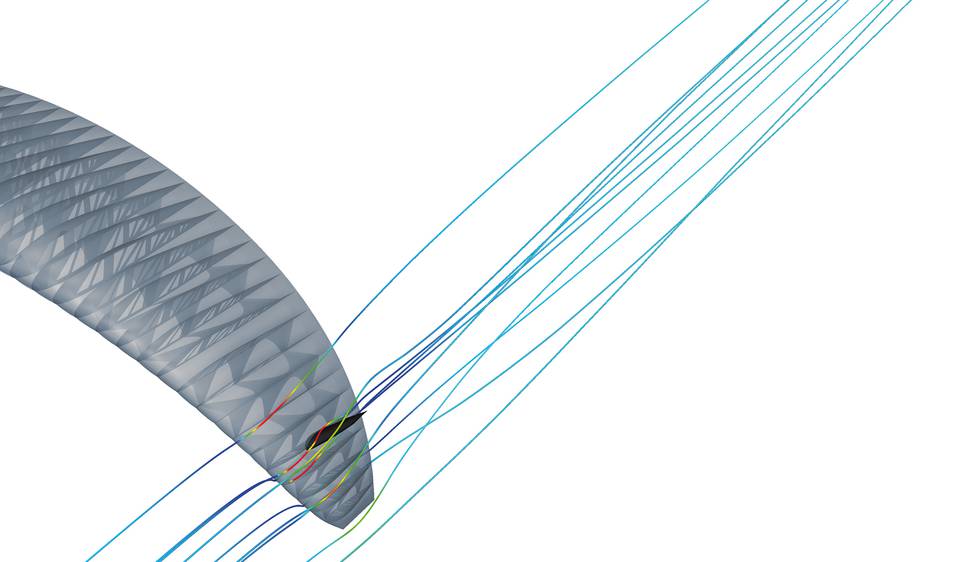
C wires
These flexible plastic rods are used to retain the profile shape. It doesn’t matter too much if you bend them, as they spring back into shape, but when packing it is best to fold the trailing edge up to the beginning of the C wires and then fold that part of the wing as one piece. Valéry Chapuis demonstrates.
Geared Speedbar
Accelerated flying is a big part of the performance available on the IOTA 2. You need to set up your harness to ensure you can use the full travel of the speed system. It has an easy-to-push 3:1 gear ratio for the first part of the travel (when your leg is bent) and an adjustable ball that defines the changeover point to the 2:1 gearing when the pressure and acceleration increases.
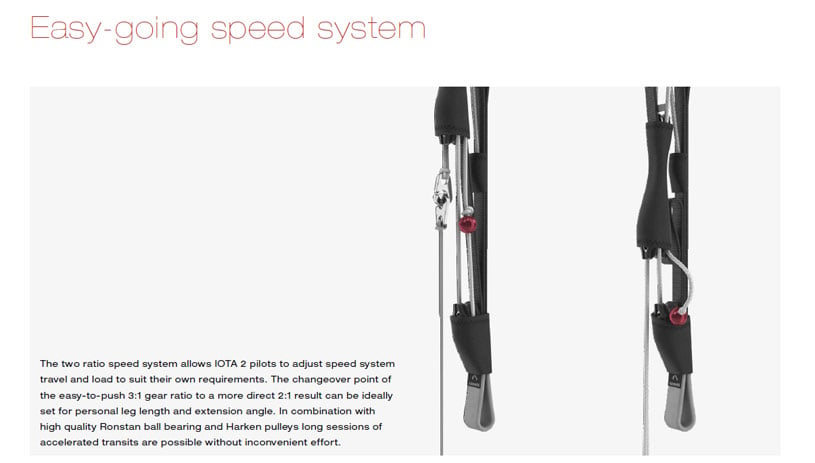
Pitch control handles
These handles pull down on the C risers and partially on the Bs as well, providing steering control during accelerated flight without deforming the canopy. Are these essential? “No, I don’t use them,” said Kari Eisenhut. “I prefer to adjust on the speedbar. But many pilots like this feature, so we thought why not? It makes it easier for some people.”
If you find you don’t use them, you can remove the line by simply loosening the fixing loops.
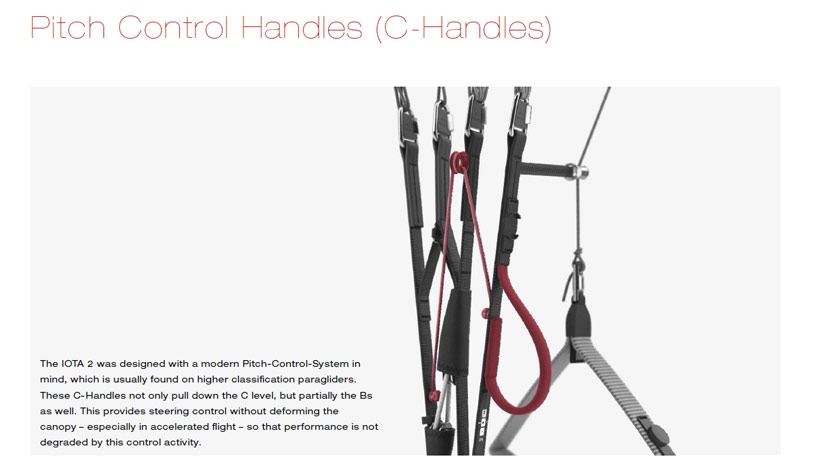
Putting it all together
Kari has a theory about XC flying based around the ‘magic number’ of a 200km triangle flight in the Alps. For many this will remain a distant goal, but it is now possible to achieve this with the IOTA 2.
It’s all about the performance to comfort ratio and maintaining a high flying speed during glides.
"It's simple: either you climb, or you glide, and when you glide, you push the bar."
The IOTA 2 is the easiest Advance glider to fly long distance with. It has the best balance of performance and safety.
To fly a 200km triangle in the Alps, you need a good day, let's say takeoff at 11am and landing at 7pm, so 8 hours of flying. 50% of your time is spent on climbing, 50% on gliding.
That means you only have 4 hours of flying straight where you must cover 200km, so it is very important you fly at 50km/h. You can fly this fast on the IOTA 2, it is easy: push the speedbar and enjoy the flight.
